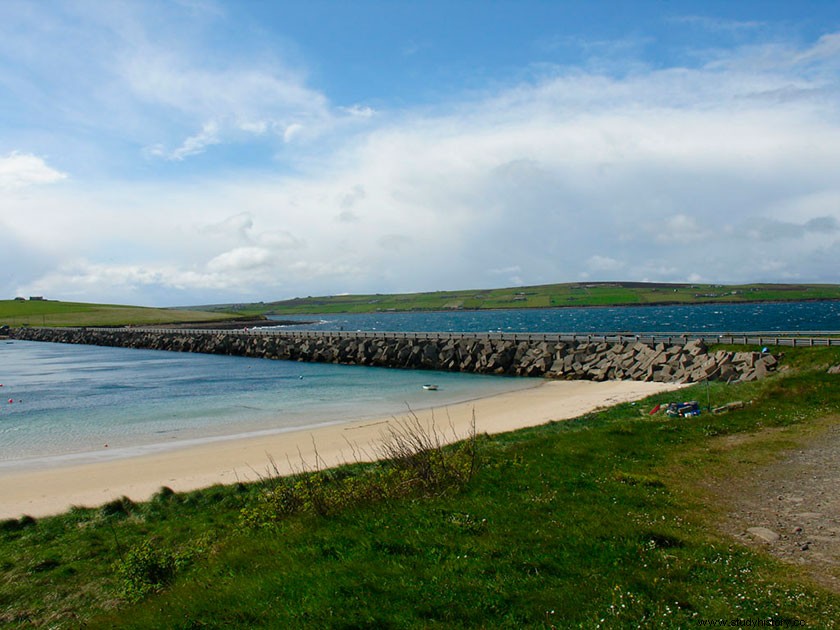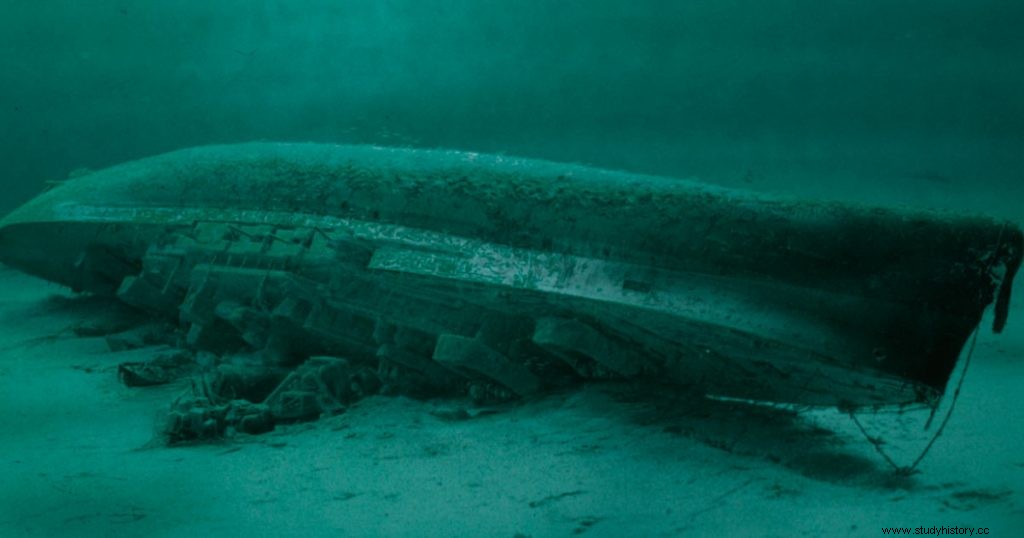
Scapa Flow is a bay located in the Scottish Orkney Islands, just over 20 km long by about 15 km wide. Its geographical position, its sheltered waters and an almost constant depth of 40 meters have made it a true natural port. Which has been used since the Vikings in the Middle Ages, until the 20th century. Precisely in the latter and converted into the most important naval base of the British Royal Navy, it will be when it enters fully into history.


Who was going to tell the quiet citizens of these northern Scottish islands that the incidents that took place during the two world wars were going to turn their bay in a paradise for divers from all over the world ?
Scapa Flow during the Great War.
The Imperial German Navy was one of the main arms of the Teutonic offensive to win the Great War. But his failure to blockade the British Isles, along with his mistake in sinking the American merchant ships that were carrying supplies to Great Britain, put the German Empire in check. In short, it was the main cause of the US entry into the war. Which led to the slow end of it, after the gradual withdrawal of the conflict of Germany's allies.
On the other hand, the mutiny of the German sailors, at the end of October 1918 in the town of Kiel, before the call to participate in the last naval war against the Royal Navy , triggered the end of World War 1. Since these were joined by ground soldiers, and workers from major German cities. These events led Germany to request an armistice on November 11, 1918.
A few days later, specifically on November 21, 74 German ships departed escorted by the British victors towards Scapa Flow. At the command of the German fleet an experienced Prussian admiral, Ludwing von Reuter, with an explicit mission, to wait for the results of the peace talks of the Treaty of Versailles. Although it seems that he was very clear about what his mission was, since he prepared it thoroughly.


Ludwig von Reuter
The news of the worrying agreements that the allies were preparing for the German ships, which involved dividing them between Italians, French, and English, led von Reuter to execute his plan. On the morning of June 21, 1919, the spotlights and the German flags began to transcribe the instructions in Morse. Just five hours later, 52 of the 74 ships were at the bottom of Scapa Flow. By the way, the rest were recovered by the English navy. On the other hand, Ludwig van Reuter, who was arrested and convicted by the British, became one of the heroes of the German defeat in the Great War, and the first decorated by Hitler at the beginning of the next World War.
Ernest Cox, the richest junk dealer in the world.
After the war came the reconstruction, for which the need for steel led to a considerable rise in the price of this metal. Ernest Cox, a wealthy businessman from the world of metal got down to work, between 1924 and 1932 he raised a large part of the fleet, both German and some English ships that had been sunk in the course of the Great War. His deed earned him the nickname of “ the man who bought a fleet ”, Title of the book written in 1964 in his honor. Although the great crisis ended the profitability of this operation, which had to be definitively abandoned in 1933, still leaving a large number of ships at the bottom of Scapa Flow, waiting for the most illustrious of all.
The sinking of the HMS Royal Oak.
The British battleship was born at the beginning of the 1st World War. After which she became one of the main protagonists of the Battle of Jutland, against the fleet of the German Imperial Navy, in 1916. After the war she toured the waters of the Atlantic and the Mediterranean on surveillance missions of the precarious peace between wars. The summer of 1939 despite being much slower, both in the face of her rivals and her new shipmates, she prepared to take her place in the rear of the Royal Navy before the new World War . Obviously in Scapa Flow waters.


HMS Royal Oak
Not even a month and a half had passed since the beginning of the 2nd World War, when that October 14, 1939, Günther Prien, taking advantage of the high tide, managed to introduce a submarine U- 47 German, for the few hundred meters that separate the islands of Burray and Mainland. After which he executed two torpedo shots that hit the HMS Royal Oak, which quickly sank in the waters of Scapa Flow taking with it the lives of 834 people, of the 1,200 who were on board.
The British response was to close off the eastern part of the bay, connecting the different islands through roads. To finish them, it was necessary to use the labor of prisoners of war, specifically the Italians who were arriving in the British Isles from January 1942. The result can be seen today in the so-called Churchill barriers and in the beautiful chapel of the Italians located on the island of Lamb Holm, built with the same materials as the main work.


One of the four Churchill barriers.
All this while the bay of Scapa Flow became one of the most important points of the Second World War. From there the ships left for the USSR occupied by the Third Reich, to promote a relief from the siege, to which cities such as the current Saint Petersburg, the former Leningrad, were subjected. In addition to serving as a spearhead in the hunt for the most famous German battleship, the Bismark, which was sunk off the coast of France. All this after having caused enormous casualties to the British Royal Navy, in the Battle of the Denmark Strait at the end of May 1941.
Scapa Flow today.
All this peculiar history has made Scapa Flow a unique marine environment in the world. As has already been said for the practice of scuba diving, but also for any passionate traveler of the history of the 20th century.


The little Italian church of Scapa Flow
Today there are still about 60 sunken ships, in addition to four planes. Almost everyone can be lowered, with some exceptions such as the HMS Royal Oak, since she is prohibited, after being converted by the British authorities into a kind of national grave. By the way, every October 14 there is a descent to change the bow flag, as a tribute to the deceased.


The big attractions are the three enormous battleships of more than 26,000 tons each, and the four cruise ships of around 5,000 tons, although they can only be accessed by expert divers. For the rest, there are the small wrecks that are located in the vicinity of the coasts, many of them can be observed from said nearby coast, without the need to soak in the icy waters of the North Atlantic.
Finally, I invite you to learn a little more about the history, and the location of the ships, on the following official Scapa Flow website:scapaflowwrecks
Images:commons.wikimedia
